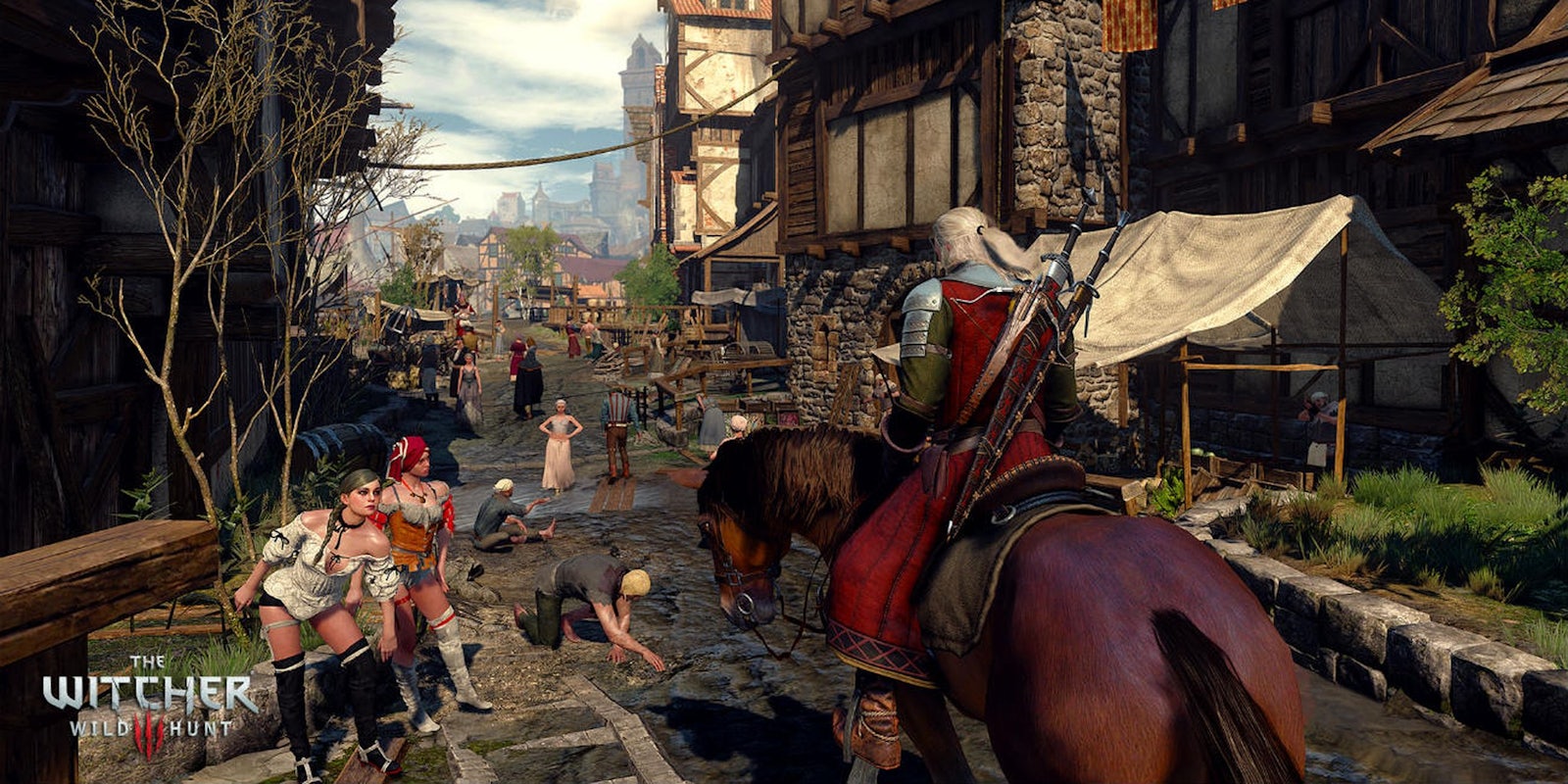Gamers are learning another lesson about why they shouldn’t take E3 trailers or pre-release game footage so seriously.
Developer CD Projekt RED has been catching flak from fans over a perceived downgrade in graphics quality between pre-release footage, included in marketing reels for The Witcher III: Wild Hunt in 2013, and the final product released on Tuesday. CD Projekt RED has addressed the controversy by reminding fans that pre-release footage is not meant to represent the finished game, and that gamers should take those videos with a grain of salt.
“We don’t agree there is a downgrade but it’s our opinion, and gamers’ feeling can be different,” CD Projekt co-founder Marcin Iwinski told Eurogamer. “If they made their purchasing decision based on the 2013 materials, I’m deeply sorry for that, and we are discussing how we can make it up to them because that’s not fair. We don’t agree there is a downgrade but it’s our opinion, and gamers’ feeling can be different.”
This is the same sort of discrepancy and accompanying reaction as the video game industry saw in regard to Watch Dogs last year, when the gorgeous E3 2012 trailer for the game bore little resemblance to the game that was released. Accusations of a graphical downgrade were also levied in that controversy, and modders were able to unlock superior graphics options in the PC version that were included, but not active in the commercial release.
What marks this latest fan dissatisfaction over graphics quality is that Nvidia and AMD, the leaders in graphics card technology, are once again arguing over who is to blame, but more specifically than usual. Nvidia produces the GeForce and GTX lines of graphics card, or GPUs, and AMD produces the Radeon line of cards. Neither company produces graphics technology that is clearly superior to the other’s. There are differences, but they can be subtle.
Each company also produces proprietary APIs to allow its graphics cards to provide specific technology for specific aspects of game animation. GameWorks is Nvidia’s package of APIs, and AMD is blaming specific technology like Nvidia’s HairWorks, which adds details to game character coiffures, for causing performance issues on computers using Radeon graphics cards.
“Around two months before release, or thereabouts,” AMD’s Richard Huddy told Ars Technica, “the GameWorks code arrived with HairWorks, and it completely sabotaged our performance as far as we’re concerned. We were running well before that…it’s wrecked our performance, almost as if it was put in to achieve that goal.”
“GameWorks improves the visual quality of games running on GeForce for our customers,” Brian Burke, a PR representative for Nvidia’s GameWorks package, told Ars. “It does not impair performance on competing hardware.”
CD Projekt has already released a patch for the PC version of The Witcher III to address some of these issues. A patch for the PlayStation 4 and Xbox One versions will be released in the near future.
Illustration via CD Projekt RED


